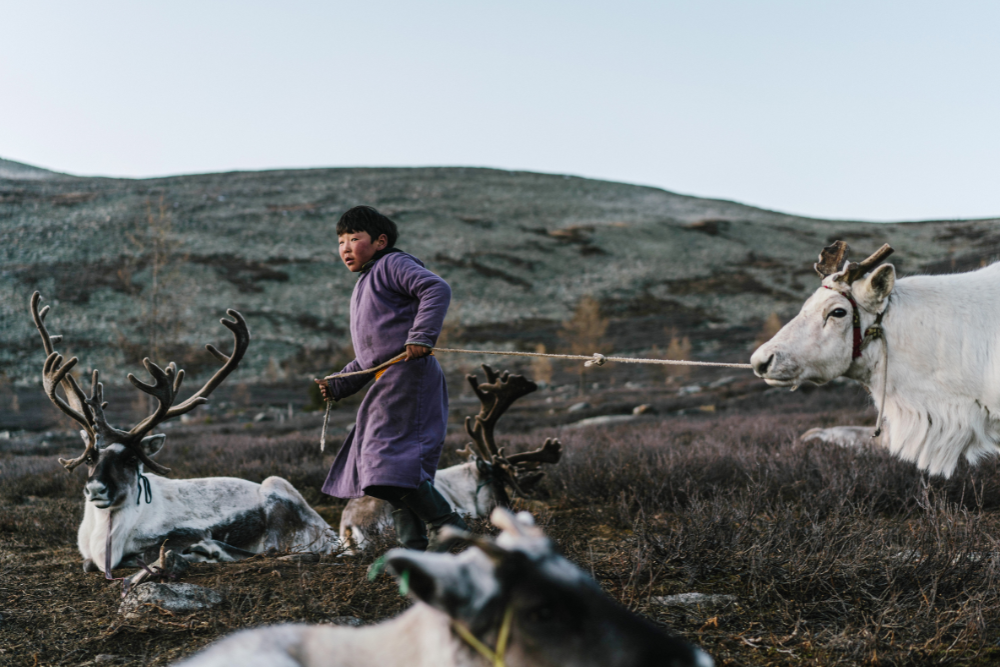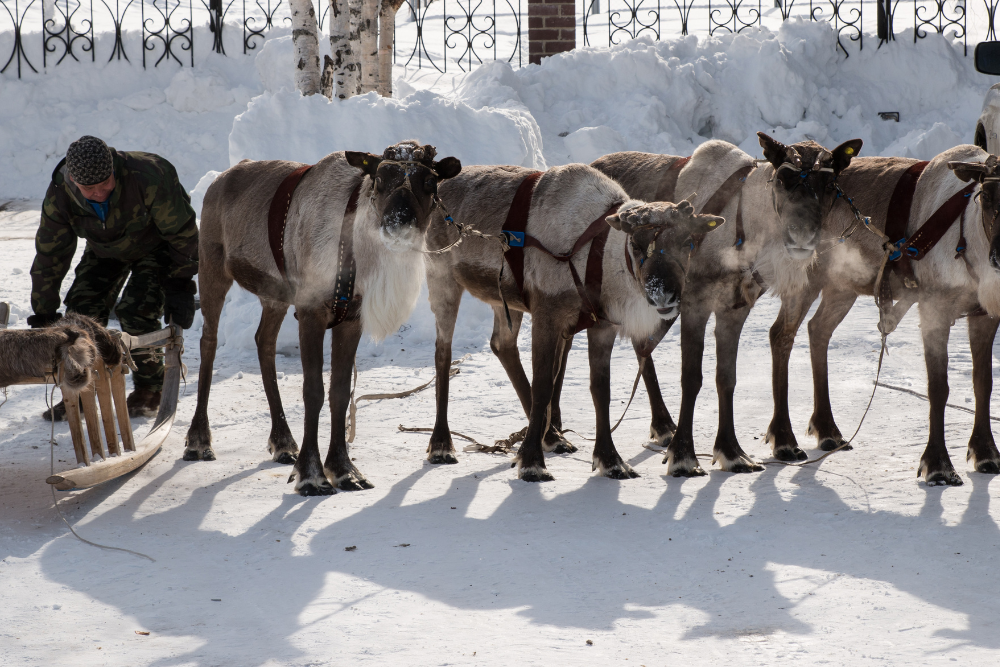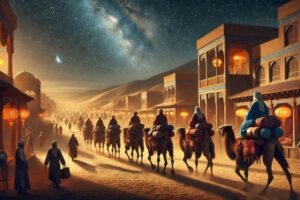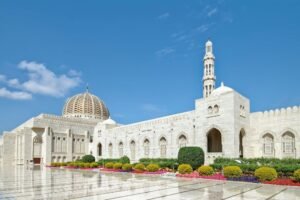The Sami people, the indigenous inhabitants of the Arctic regions of Norway, Sweden, Finland, and Russia’s Kola Peninsula, have a deep cultural connection to the land and its wildlife. Central to their way of life is reindeer herding, a tradition that has sustained them for thousands of years. Reindeer herding is not just an economic activity for the Sami; it’s a vital part of their identity, history, and spirituality. This guide takes you on a journey through the Sami reindeer herding traditions, exploring their cultural significance, practices, and the modern challenges they face.
1. The Role of Reindeer in Sami Culture

For the Sami people, reindeer are far more than livestock—they are a symbol of their cultural identity and spiritual connection to nature. The relationship between the Sami and their reindeer goes back over 2,000 years, with reindeer providing sustenance, clothing, tools, and even a means of transportation. The herding lifestyle is deeply intertwined with the seasons, as the Sami follow traditional migratory routes to care for their herds.
- Why Reindeer Are Important: Reindeer provide food (in the form of meat and milk), clothing (such as fur), and materials for tools. Every part of the animal is used, which speaks to the Sami’s respectful and sustainable approach to nature. Historically, reindeer were also crucial for transport across the snowy tundra, with sledges pulled by reindeer serving as a primary means of travel.
- What to Learn:
- The reindeer’s migration patterns are influenced by seasonal changes, with the Sami guiding their herds between summer and winter grazing grounds.
- The Sami believe that reindeer have a special connection with humans, and there are many traditional rituals surrounding their care and slaughter.
- Best Time to Visit: The best time to explore reindeer herding traditions is in the winter or early spring, when the herders are actively moving their herds across the snow-covered landscape. Alternatively, late autumn can also be interesting, as herders prepare for the reindeer slaughter season.
2. Traditional Herding Techniques and Tools

Reindeer herding is an intricate and skillful practice that has been passed down through generations. Traditionally, herding was done on foot or by sledges, and it required a profound understanding of the land and animal behavior. Today, modern herders may use snowmobiles or helicopters, but many still follow traditional methods.
- What to Do:
- Join a reindeer herding tour: In places like Norway’s Finnmark region or Sweden’s Lapland, many Sami guides offer opportunities to witness reindeer herding firsthand. You might be invited to join the herders as they round up and manage the herds.
- Learn about traditional Sami tools such as herding sticks, which are used to guide and manage the reindeer, and the sledges that transport both reindeer and goods across vast expanses of snow.
- The Reindeer Herding Year:
- The herding year is marked by seasonal moves. In summer, the reindeer graze in the lush, verdant highlands. As winter sets in, the herders lead the animals back to lower ground, where they are protected from the harsh Arctic winds and can be more easily fed.
- The autumn slaughter is a significant event, as it provides the reindeer meat that sustains the Sami through the long winter months. Traditionally, this slaughter is carried out in harmony with the rhythm of nature.
- Best Time to Visit: Participating in or observing herding activities is best done during autumn for the slaughter or winter when the herders move the reindeer between grazing grounds.
3. Reindeer as a Sustainable Resource

Reindeer herding is based on sustainable practices that have been developed over centuries. The Sami manage their herds in a way that ensures the environment is respected and the animals’ welfare is prioritized. Unlike industrial farming practices, which often rely on large-scale production, Sami herders maintain smaller, manageable herds, ensuring that their grazing does not overextend the land’s resources.
- Why Sustainability Matters: Reindeer are an important part of the Arctic ecosystem. By rotating grazing areas, the Sami help prevent overgrazing and maintain the health of the land. The migration patterns of the reindeer also support the balance of plant and animal life in the tundra, ensuring that the environment remains stable.
- What to Learn:
- Sami reindeer herders are experts in ecological balance. They understand how to work with the environment, taking care not to disrupt local ecosystems.
- Some modern herders are working to revitalize traditional practices alongside new sustainable initiatives, ensuring that reindeer herding remains an environmentally sound practice for future generations.
- Best Time to Visit: Any time during the grazing seasons (spring and summer) is ideal to observe the healthy land practices of Sami herders, as it’s a great time to see the herds thriving in the wild.
4. Cultural Significance and Spiritual Beliefs

Reindeer herding is not only a livelihood for the Sami—it is also a deeply spiritual practice. The reindeer are considered sacred, and many Sami communities have traditional beliefs surrounding the animals’ connection to the divine. From rituals that ensure good fortune in the herding season to ceremonies that honor the animals, reindeer play a significant role in the Sami’s worldview.
- Rituals and Festivals:
- Sami Reindeer Slaughter Festival: In some regions, such as Norway’s Finnmark, the slaughter of the reindeer is marked by ceremonies that honor the animal’s spirit, ensuring that it’s used respectfully and its life is celebrated.
- Many Sami believe in the presence of spirits in nature, and the successful reindeer herd is seen as a blessing. The slaughter is sometimes followed by a small, respectful ceremony where the community gives thanks for the sustenance that the animals provide.
- What to Learn:
- Sami herders practice a form of shamanism that involves connecting with the spirits of the land and the animals. There are sacred rituals to ask for protection and strength during the herding season.
- Joik, the traditional Sami form of song, is often used to communicate with the spirits or the reindeer, further embedding the animals in the Sami spiritual and cultural identity.
- Best Time to Visit: The winter solstice or during midwinter festivals can be an excellent time to witness Sami rituals and ceremonies.
5. Modern Challenges Facing Reindeer Herding

Despite its cultural significance, reindeer herding faces numerous challenges today. Climate change, industrialization, and governmental regulations have made it harder for Sami herders to maintain their way of life. Warming temperatures have altered the reindeer’s migration patterns, leading to shorter grazing seasons and more unpredictable weather. Furthermore, expanding infrastructure like roads, wind farms, and tourist developments often disrupt traditional herding routes.
- Challenges:
- Climate Change: Reindeer rely on frozen snow for grazing in winter. As temperatures rise, it can create a hard ice crust that makes it difficult for the animals to reach food.
- Land Encroachment: Modern industries, such as mining, logging, and tourism, encroach on traditional grazing areas, limiting the space available for herders to move their reindeer.
- What to Learn:
- Many Sami are advocating for land rights and the preservation of their ancestral herding territories to ensure that reindeer herding remains viable for future generations.
- Climate activism and Sami-led organizations are working to bring awareness to the challenges faced by indigenous herders, encouraging sustainable practices and policies that protect both the environment and Sami livelihoods.
- Best Time to Visit: Winter and early spring are ideal to learn about the effects of climate change, as it’s when the herders face the harshest conditions and must adapt their traditional practices.
Conclusion
Reindeer herding is more than just a livelihood for the Sami people—it is a way of life that embodies their spiritual connection to the land, animals, and seasons. Despite the challenges posed by modernity and climate change, the Sami continue to uphold their traditions, ensuring that their bond with the reindeer remains strong.












